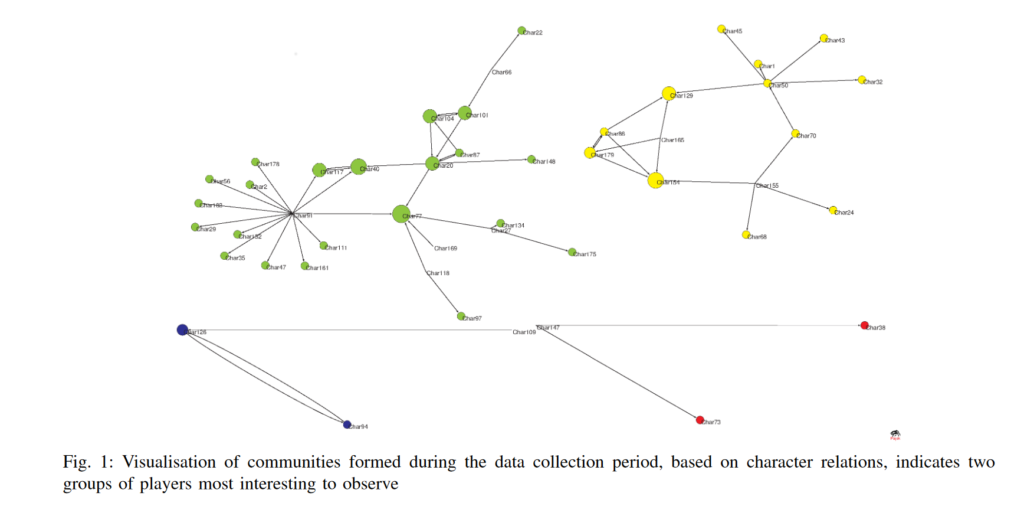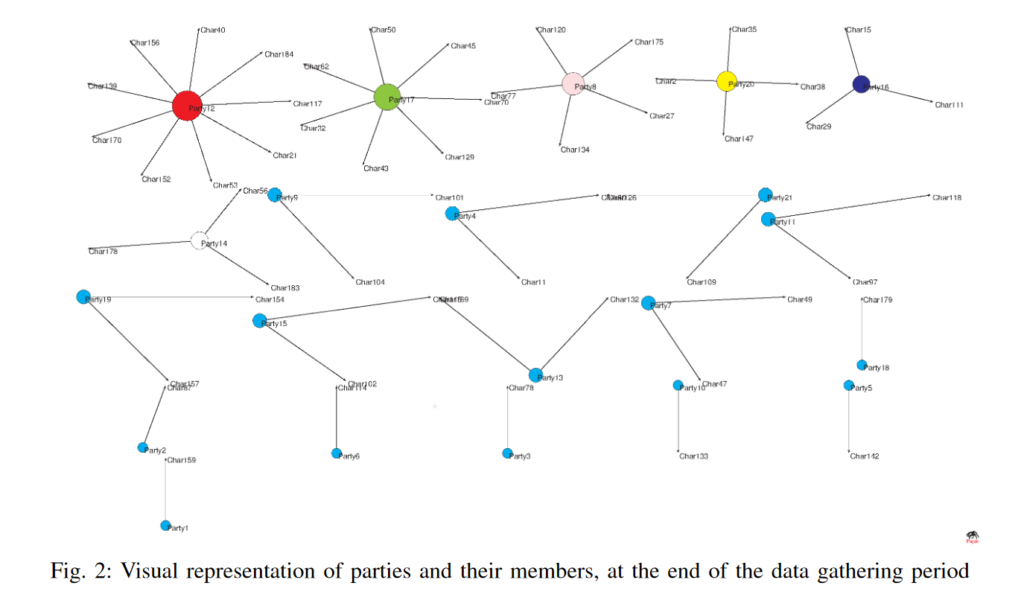MMORPGs are one the most popular and interesting genres in the video game industry. World of Warcraft, Black Desert Online and Destiny have been prominent examples of this genre for years. One the most unique features of MMORPGs are the virtual communities, most of the time referred to as Clans, that are created due to the nature of this genre, which promotes completing missions and quests with other players. One thing that has been interesting to me about these communities, are the characteristics and personalities of them and how they differ from each other. How do they recruit players and communicate with each other? Fortunately for us, there have been a research done by Markus Schatten and Bogdan Okreša Ðuri ́c from University of Zagreb about this exact subject by using analytical techniques and graph theories we are learning in CSCC46.
In this study, they observed and collected data from players, which were mostly students from three countries, for one month. After data collection, they used social network analysis (SNA) techniques to find patterns of organizational behavior among successful players.

The analysis of their data found multiple interesting player behaviors. For example, players usually describe their relationship with other players using characteristics like, Friend, Enemy and Blacklist. Another finding showed that communities are usually created among people who have the same interests. For example, players who try to complete the same mission, acquire the same items or have similar goals usually tend to group together. Analyzing chats and communications also showed that people who are on the same or similar real-life geographical locations, tend to use in game chat and whisper functionalities with each other more than others.

This study shows that analyzing player behaviors in games, specially player to player behaviors, can show many interesting facts which can be very useful to game developers to better optimize and design their games for their audience. It can also help scientists better understand how people communicate and interact with each other in virtual worlds.
Source:
https://bib.irb.hr/datoteka/796277.Proceedings_IEEE_9828a037.pdf